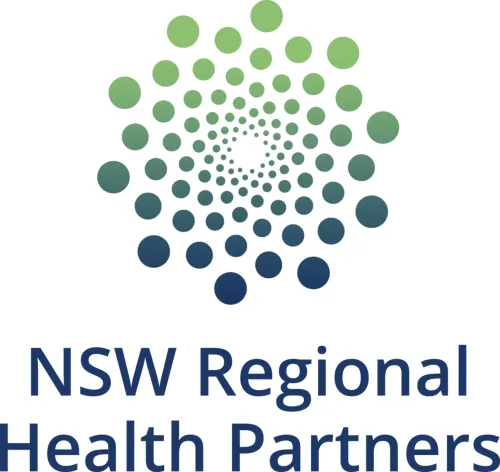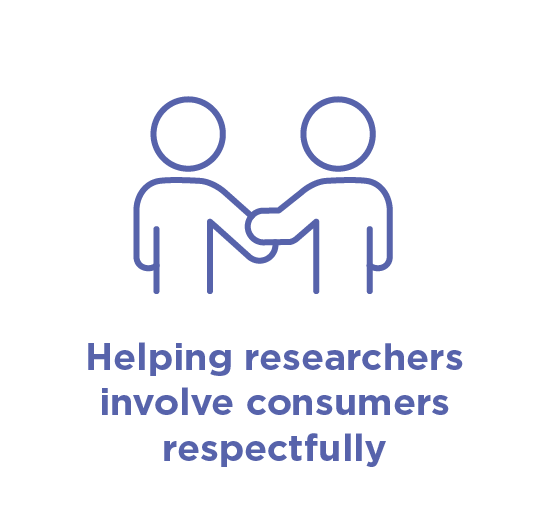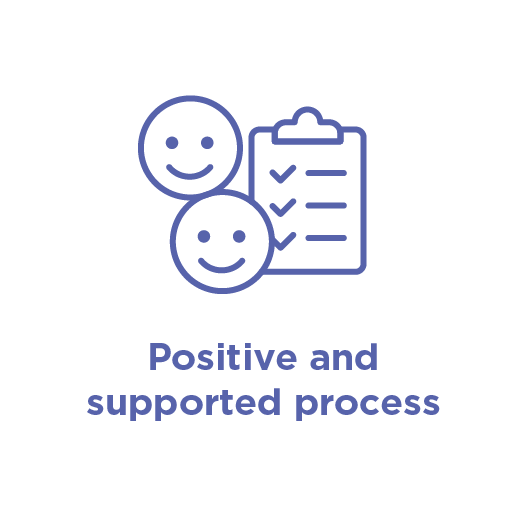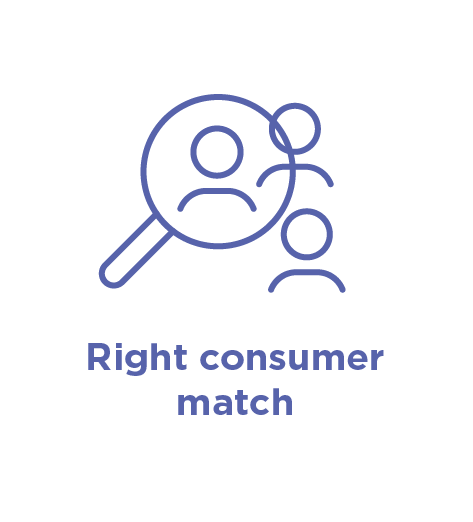The NSW Regional Health Partners is an NHMRC-accredited Research Translation Centre. We collaborate to deliver research-informed healthcare and training. The below case studies highlight our work in translating research into better health outcomes and building capability across the system.
Case studies on this page:
- Developing, re-designing or adopting platforms, systems or workforce initiatives: Consumer Connect
- Providing better care: Finding Our Way Through Pain: The development of a co-designed, integrated model of care for First Nations peoples living with chronic pain in a regional community
- Meeting the needs of your end-users in your population: Stroke early warning signs

Case studies from all Research Translation Centres are available from Impact and outcomes.
Developing, re-designing or adopting platforms, systems or workforce initiatives: Consumer Connect
Challenge
Consumer involvement is essential for the effective translation of health research but is still an emerging and poorly understood area of research. One of the greatest barriers for researchers is identifying and connecting with suitable consumers, however, it is also important that the participating consumers have a positive experience. To facilitate appropriate connections and guidance, NSWRHP has developed a secure and confidential data management system together with procedures and governance to protect and support all parties.
Approach
NSW Regional Health Partners (NSWRHP) has developed an online platform in REDCap, enabling individuals to register their interest in supporting health-related projects, research and services, and for researchers to request consumers to be involved in their projects.
REDCap has been selected due to its security features, and governance processes are being refined to ensure confidentiality for consumer registrants. Participants provide basic demographic and health information and identify the clinical areas in which they are interested and have lived experience. NSWRHP onboards all consumers and will maintain contact through a biannual newsletter.
Researchers requesting consumer involvement are required to outline their proposed research and describe any demographics, skills, experience or expertise required. They are asked about the expected time commitment for consumers, the duration of project, the nature of involvement, and if consumers will be remunerated (recommended).
NSWRHP staff then approach potential consumers to determine interest and, if appropriate, arrange and lead an introductory meeting. Consumers’ personal details are not provided to the researcher until after this meeting and until authorised by the consumer.
Although time consuming, NSWRHP staff personally oversee introductions and initial interactions to ensure expectations are managed and a positive experience for all parties. This will be streamlined as the program matures.
Significance
The value of this initiative is in making it easier for researchers to meaningfully and respectfully involve consumers in their research, and in finding the right consumers for the project. Managing the expectations of all parties and guiding the engagement process makes for a more positive experience and helps identify further training and support needs.



Value-add of centre
This is a NSWRHP initiative of benefit to all partners. It is not something the individual partners could or would implement. Marketing has been limited until all governance issues have been addressed, but interest is strong, and we received 9 researcher requests in the first 3 months.
Reach
Consumer Connect is available to researchers in all partner organisations and to external organisations as appropriate.
Next steps
We are refining REDCap reporting and search features to simplify matching and monitoring, and we are finalising governance arrangements to ensure consumer confidentiality within a sustainable service model. Once completed we will begin active marketing.
Providing better care: Finding Our Way Through Pain: The development of a co-designed, integrated model of care for First Nations peoples living with chronic pain in a regional community
Challenge
Regional, rural and remote (rural) communities have disproportionally higher rates of people living with chronic pain, and higher prescribing rates for long-term opioids for chronic pain, than their metropolitan counterparts. Further, specialist chronic pain services are largely located in metropolitan tertiary hospitals, making it difficult for Indigenous Australians residing in rural communities to access to these services. Indigenous Australians living in rural areas with chronic pain are at risk of receiving inappropriate and potentially harmful treatments for chronic pain. This has been flagged as a priority by General Practitioners working in Aboriginal Medical Services (AMSs).
Approach
This project is seeking to determine if there are alternative models of care that can be used for Indigenous Australians living in areas where there is no in-person access to a Tier 2 or 3 pain centre. Specifically, the project is determining if an integrated model of care, co-designed with community to incorporate culturally safe and responsive approaches to chronic pain care, could be successfully delivered by public health pain centres utilising decentralised community-based services. This project is operating across the Armidale Local Government Area.
There are 7 overlapping phases to the project; from engagement with Indigenous Australians living with chronic pain (and their family members) to understand their needs and the barriers to accessing effective multi-disciplinary and culturally responsive care, to the development of a culturally responsive integrated model of care using a co-design framework.
The model of care will be further proof-of-concept tested by end users and key stakeholders to ensure the model is robust, feasible, efficient and sustainable.
Significance
This work is addressing a major health problem for Indigenous Australians, navigating a culturally safe approach to research translation with local Indigenous leadership. Through collaborations with local Elders, the Aboriginal Health and Medical Research Council (AHMRC) and the University of Newcastle’s Aboriginal Health Research Community Panel, the team is co-designing practical resources that reflect local needs and resources and will ensure sustainability.
Value-add of centre
NSW Regional Health Partners (NSWRHP) initiated this project to increase access to evidence-based chronic pain services in rural Australia. Following an initial patient-journey mapping session in April 2023 which identified a need to improve chronic pain care in rural communities, NSWRHP led the development of research teams within partner organisations to address the identified problems. NSWRHP continues to provide practical and financial support for the Armidale project (above) and a concurrent project in Port Macquarie. On completion, NSWRHP will facilitate further trials and evaluation of the models.
Reach
The geographic reach has been contained in the first instance to ensure local relevance and applicability. The project is building understanding, confidence and competence in co-design and building relationships with Indigenous communities and organisations. The outcomes and learnings from this project will support future efforts to address Indigenous health problems, and the management of chronic pain in rural areas.
Next steps
Ethics approval was received in February 2025. The project is now moving to the co-design phase.
Meeting the needs of your end-users in your population: Stroke early warning signs
Challenge
The Cowper electorate in Mid North Coast of NSW has Australia’s highest incidence of stroke. This reflects the high proportion of Aboriginal Australians in the electorate and the increased risk of Aboriginal Australians experiencing and dying from stroke.
Early recognition and management of stroke significantly improves patient outcomes. The F.A.S.T ('Face', 'Arm', 'Speech', 'Time') mnemonic is used worldwide but is not well recognised or understood by Aboriginal Australians.
Recent research identified a need for improved early stroke management in Aboriginal communities, including culturally appropriate community-based health promotion, prevention, and communication strategies.
Approach
Aboriginal stroke survivors in the Dunghutti community in Kempsey were keen to utilise local ways of knowing, being and doing, to promote learning and improve stroke recognition. This community-led project has developed a culturally appropriate F.A.S.T stroke recognition and response tool to increase awareness of the emergency response and warning signs of stroke. The collaborative research process has been documented so the researchers’ learnings about Aboriginal ways of knowing, being and doing can be shared, to support the development of other co-produced health literacy resources.
Significance
The research project was carefully designed to ensure genuine community participation and ownership throughout all stages of the research process. It is community led and explicitly designed to meet local community needs.
Value-add of centre
NSW Regional Health Partners (NSWRHP) has mentored the Chief Investigator and funded her clinical backfill to undertake the community consultations and evaluation. This includes interviews with participating stroke survivors and key stakeholders to understand their experiences with the research process. The project would not have proceeded without NSWRHP’s financial and practical support.
Reach
This is a local project of specific relevance to the Dunghutti community. However, the learnings are broadly applicable and will be valuable for the development of other Indigenous health literacy resources.
Partnering with the Stroke Foundation has been an important component of project, as its endorsement and support are facilitating national pathways of knowledge dissemination. Discussions have been undertaken to investigate the potential of using this research process to guide localised development of education materials throughout the country.
The Stroke Foundation is also considering including the reimagined F.A.S.T message in their widely distributed 'Our stroke journey: Helping our mob after stroke'.
Next steps
The artwork developed through this project has been incorporated in community resources. These resources are being delivered to community and a communications plan is being developed with the Stroke Foundation. The research team is submitting an application for an Aboriginal Heart Health grant to undertake a similar project in Biripi (Port Macquarie), Tamworth Aboriginal Medical Service and Narrabri.